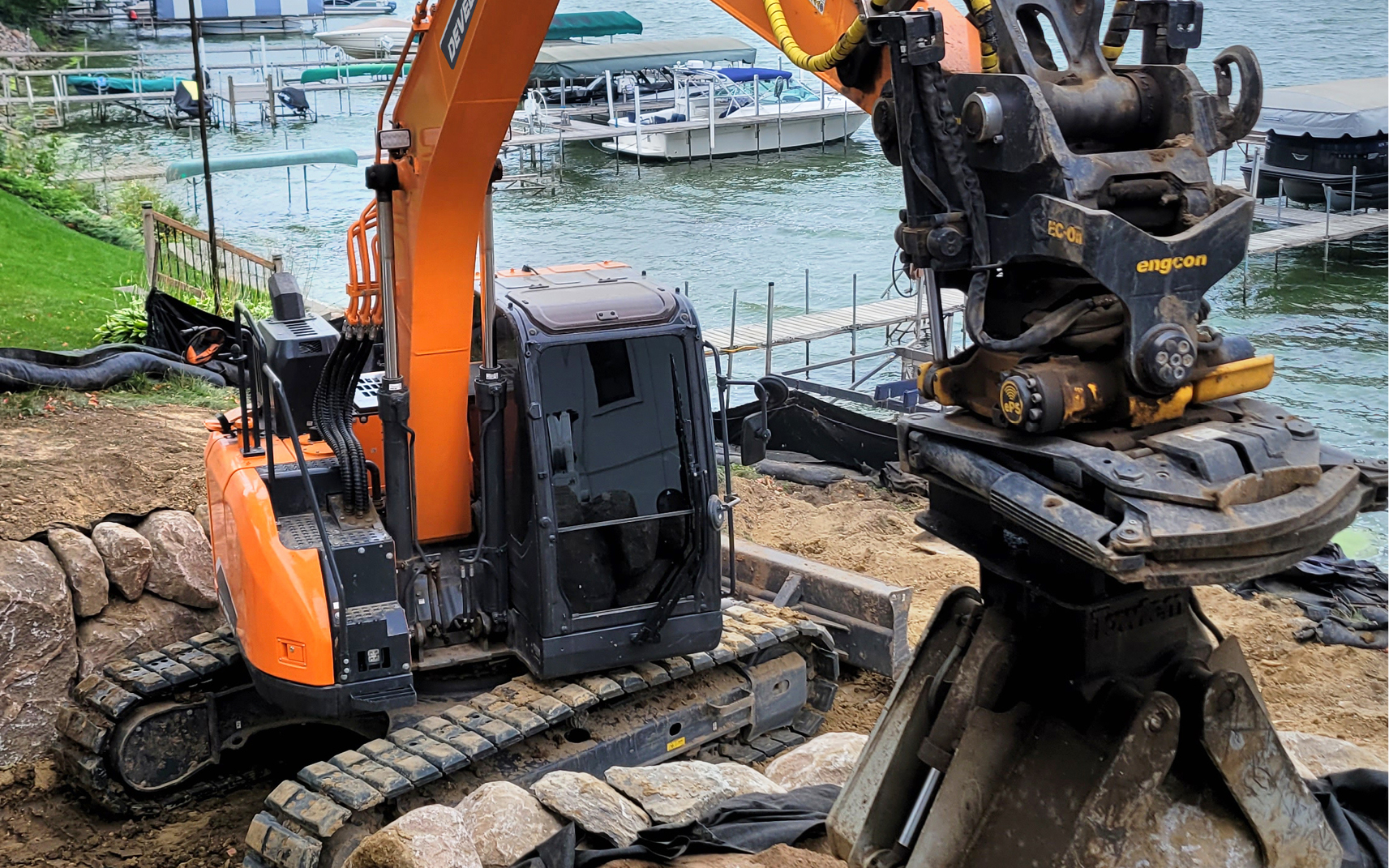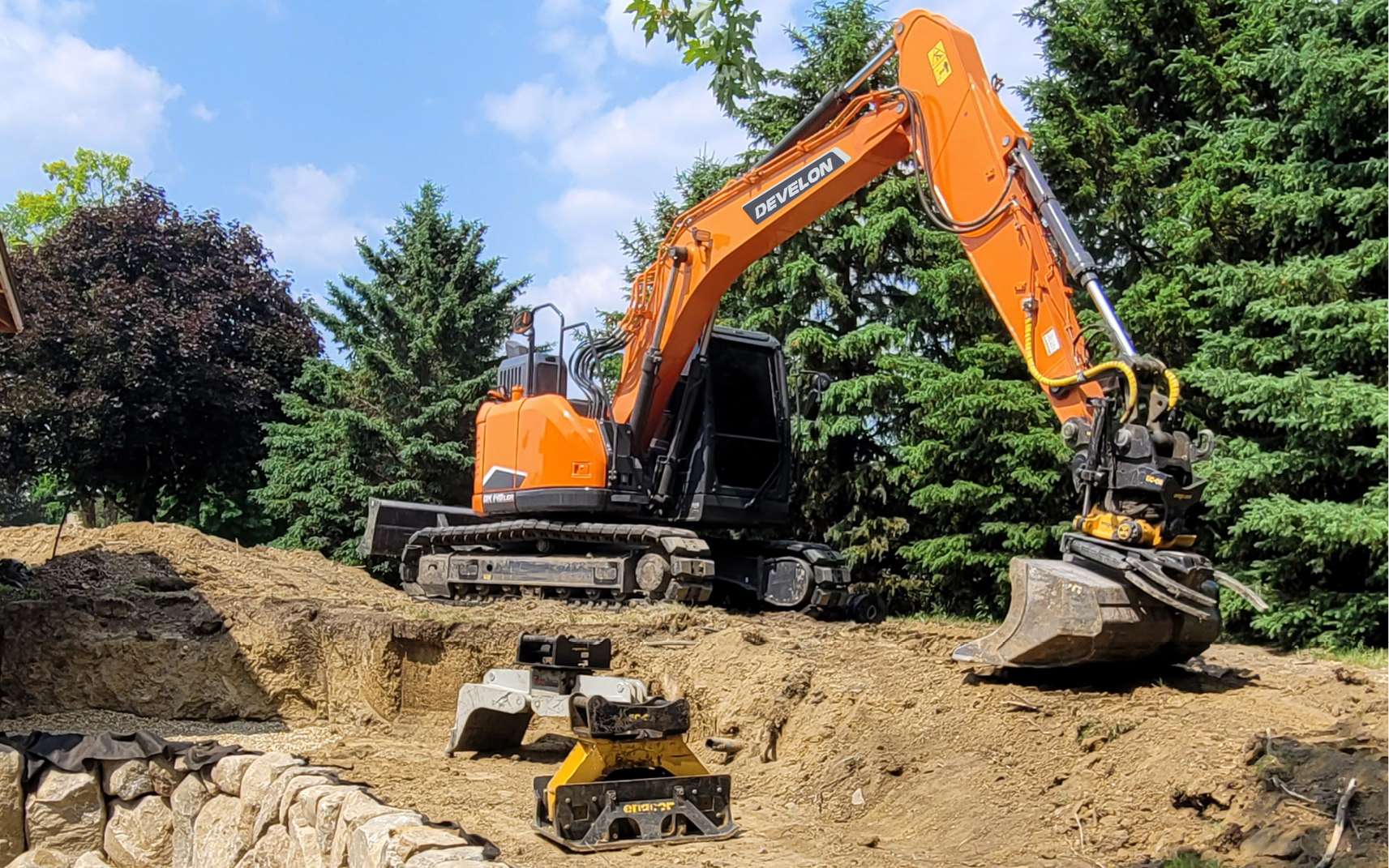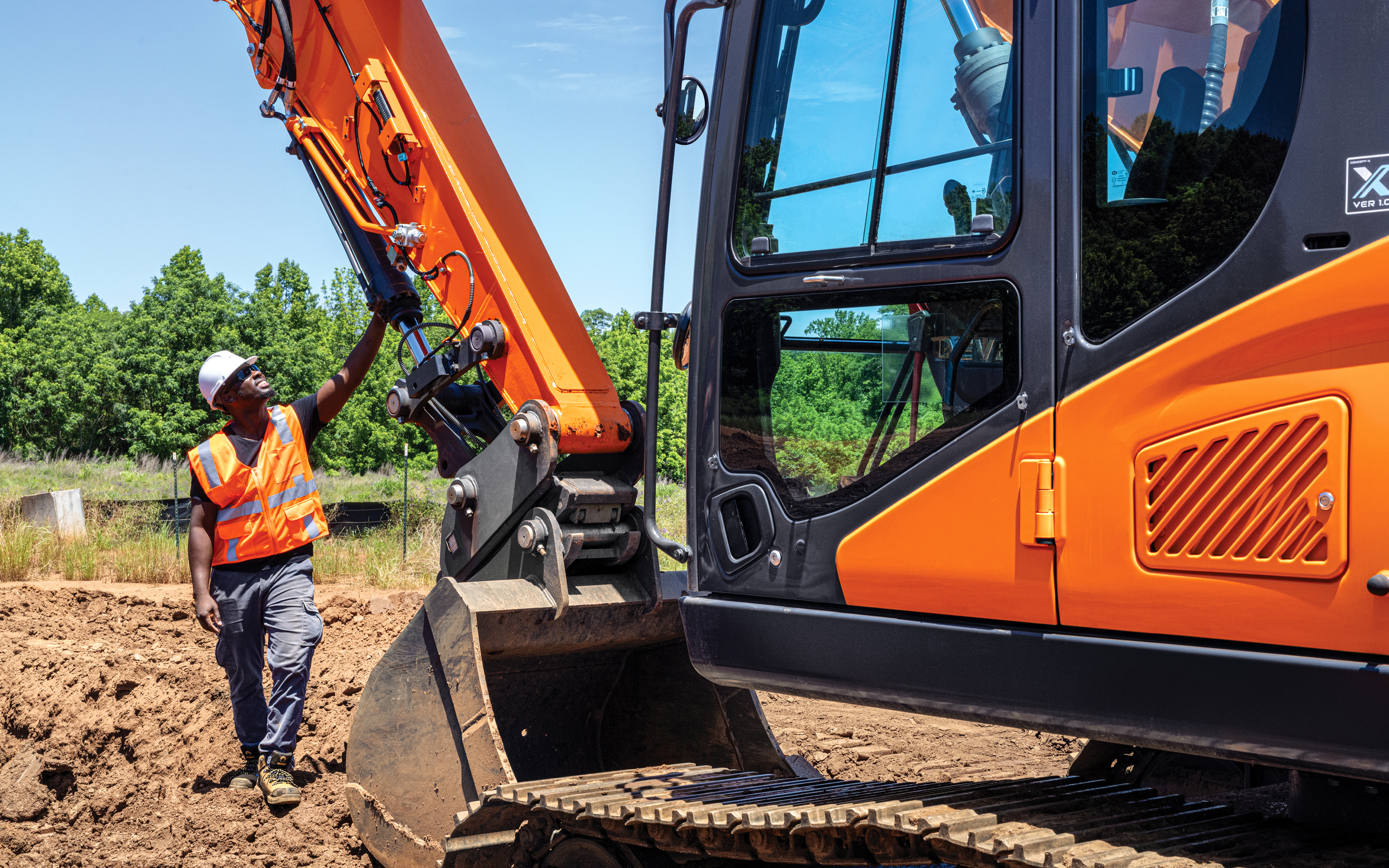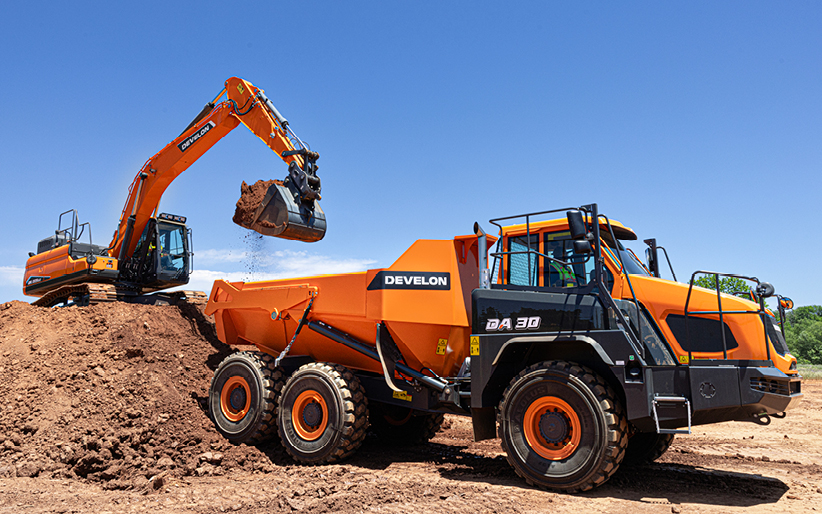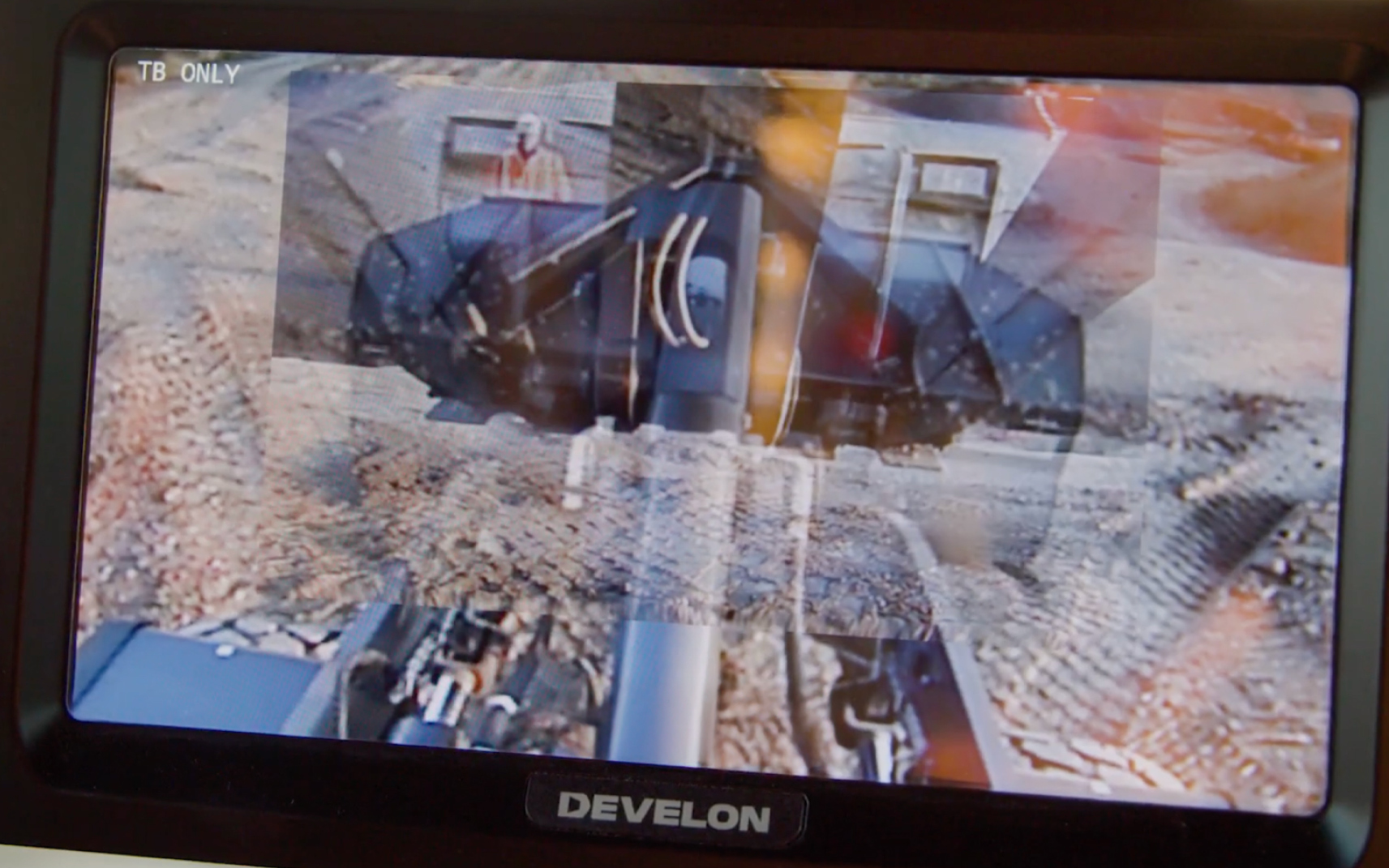Own an excavator? If so, you may want to consider a tiltrotator attachment. They can increase your versatility and improve excavator productivity, particularly with hydraulic attachments.
While readily available in Europe for more than 25 years, they’re becoming more prevalent on job sites in North America.
Tiltrotators for Heavy and Mini Excavators
Tiltrotators for excavators are generally used on a wide range of machines weighing between 2 and 33 metric tons. These include mini (compact) excavators and many small to midsize crawler and wheel excavators. A tiltrotator is like a wrist for the excavator’s attachment (e.g., bucket) to tilt it side to side and rotate it all the way around.
Tiltrotators are mounted to the end of the excavator arm or underneath a hydraulic quick coupler. They are a sophisticated rotation system combining continuous 360-degree rotation with tilting capabilities. This is achieved through the attachment’s hydraulic system of double-acting cylinders, contributing to the attachment’s precision. A high-flow swivel is essential for maximizing the versatility of your tilt rotate system.
Before purchasing one, it’s recommended that you contact your local dealer to make sure your machine’s hydraulic system has the required auxiliary hydraulic flow to meet the attachment needs. High-quality hydraulic lines are crucial for the reliable operation of a tiltrotator.
Reduce downtime of your excavator and tiltrotator attachment by properly maintaining it. Doing so will protect the long-term value, productivity and durability of the system.
360-Degree Benefits of Tiltrotators
Once installed, the tiltrotator can be paired with any number of hydraulic tools and attachments. Some of the most common attachments include buckets, grapples, hydraulic breakers, plate compactors and forks.
You can use the tiltrotator to achieve 360-degree rotation of attachments. You can also tilt it plus or minus 45 degrees, depending on the manufacturer. These tilting and rotating functions allow more flexibility and greater precision when performing certain digging or grading tasks on construction sites.
It’s important to note that a secondary monitor and different joysticks may be required. The joysticks provide additional functions and buttons needed for proper operation. Contact your local excavator dealer to discuss what your machine may need to be compatible with a tiltrotator.
Top Excavator Tiltrotator Applications
One of the most common tasks for tiltrotators paired with excavator attachments is underground construction projects. Consider cable laying, where you may be digging next to existing pipes. You can rotate the excavator bucket and work more precisely near the pipes without disturbing them.
Another popular application is landscaping work, like building rock walls. DEVELON excavator customer Matt Quinnell of Advanced Wall Structures installs tiltrotators on some of its DEVELON excavators, including a DX235LCR-7. He combines the tiltrotator with a grapple to lift, rotate and place boulders to build walls, providing increased productivity compared to other methods.
“We purchased our first tiltrotator in 2018,” says Matt. “We connect hydraulic attachments to our tiltrotators, including rock grapples, pallet forks and an assortment of buckets.
“Now, we do jobs with just one person in an excavator with a tiltrotator, where before it required an excavator operator and two workers on the ground. Also, you can put someone less experienced in an excavator equipped with a tiltrotator and 2D grade control, and the operator can do the same job as someone far more experienced.”
Tiltrotators are also beneficial in grading applications. You can use a grading bucket with a tiltrotator and angle the bucket for a more precise final grade on a slope.
Grade Control and More: Considerations for Tiltrotators
For even further precision, you can pair the tiltrotator and a 2D or 3D grade control system.
If you are working with complex 3D grade control systems, you can know where the tip of that bucket is within a high level of accuracy. If you’re working with a very complex 3D model, you can use the tiltrotator and additional components to be very precise with the placement of your bucket or other attachments on the end of the arm. This allows you to improve the productivity rate.
One thing to keep in mind is the additional weight of the tiltrotator on the end of the arm. This can be especially important when operating a mini excavator. Depending on the machine and how it is configured, you may need to visit with a dealer about adding more counterweight to help balance the excavator. A sales specialist can help you determine what you may need to ensure the machine can be properly operated.
Contact a local dealer to learn more about which excavator may be best suited for a variety of applications using a tiltrotator.
You can use the tiltrotator to achieve 360-degree rotation of attachments. You can also tilt the accessory plus or minus 45 degrees, depending on the manufacturer.”Brian Kim, Crawler Excavator Product Manager

By Brian Kim, Crawler Excavator Product Manager
Brian Kim is the product manager for heavy excavators at DEVELON.

